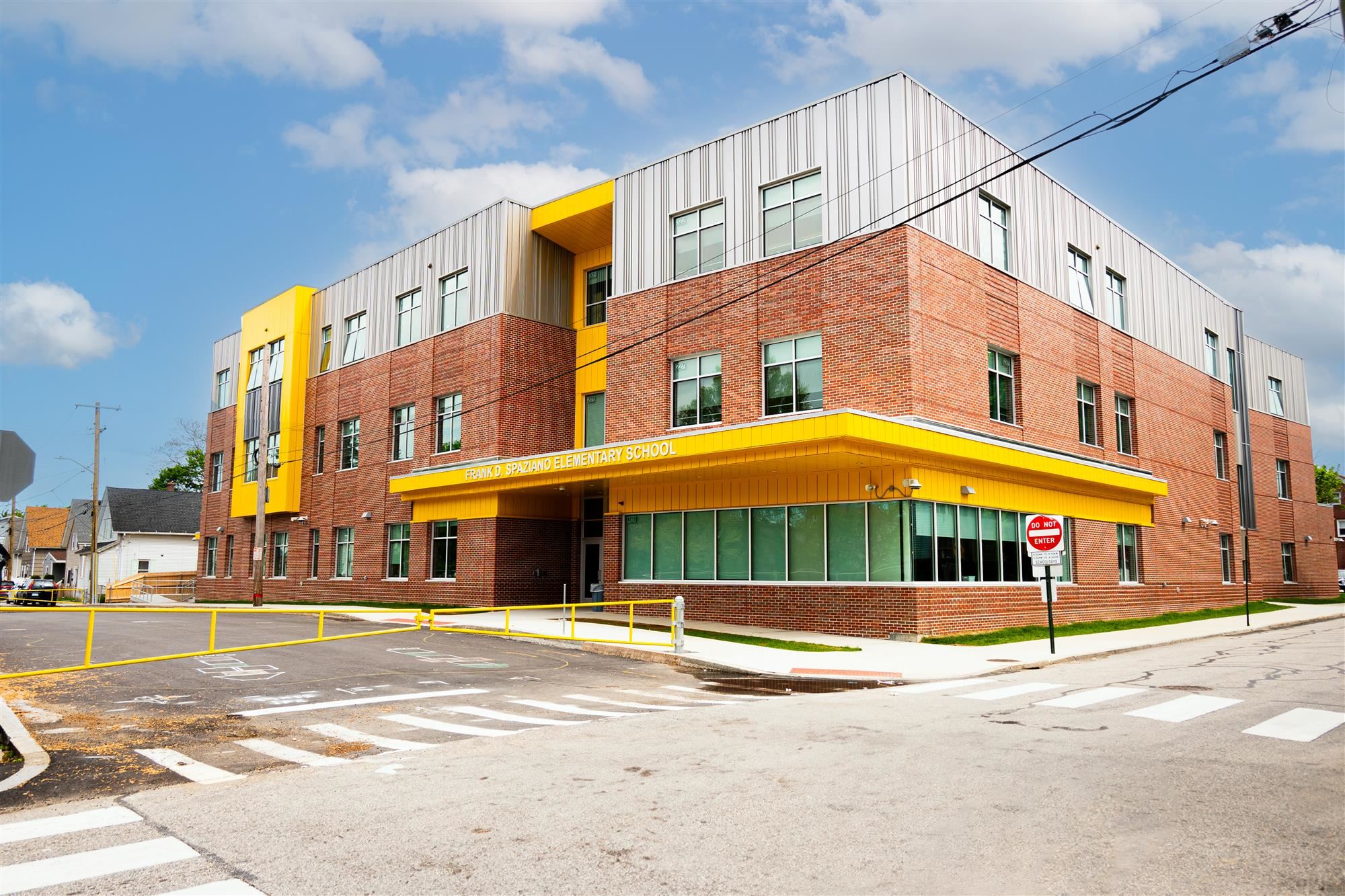- Providence's Turnaround Action Plan
- Efficient District Systems
Efficient District Systems
-

Efficient District Systems: Building Smarter, Stronger Structures
 What is the Efficient District Systems pillar?
What is the Efficient District Systems pillar?The District’s Central Office will be revitalized through the implementation of policies that allow for efficient decisions about educator personnel, resource distribution, and budgeting practices - delivering resources and support to the school level.
Where We Started
Before the intervention, Providence Public School District faced significant challenges related to its infrastructure, technology, and internal systems. 71% of school buildings were in poor condition, with only 3 schools rated as “good.” Many buildings had peeling paint, asbestos, water damage, and even rodent infestations. Additionally, some schools reported discolored drinking water and broken water fountains, affecting the overall learning environment.
Student attendance was negatively impacted by frequent bus delays and shortages, and there was limited access to technology for digital learning. The district was also using an outdated Learning Management System (LMS), and many classrooms lacked necessary SmartBoards and other technology to enhance instruction. Bureaucratic inefficiencies further compounded the challenges, leading to delays in decision-making and procurement processes, with schools waiting months for essential supplies. The registration process for new students was cumbersome and paper-based, resulting in delays and errors. School leaders had limited control over their budgets, and there was a lack of transparency around spending. Furthermore, payroll errors and delays in staff payments were common due to outdated systems.

Where We Are Now
Since the intervention, there have been dramatic improvements across all areas of district operations. A $800 million multi-phase Capital Improvement Plan has been launched, leading to the opening of 3 new schools and the establishment of a $7 million Capital Revolving Fund to address essential repairs and upgrades. To improve access to clean water, water bottle filling stations have been installed across all schools.
The district has also implemented a GPS tracking system for real-time bus monitoring, improving on-time performance and reducing delays. Over 12,000 Chromebooks and 1,300 Wi-Fi hotspots have been distributed, ensuring students have access to technology for digital learning. The Canvas LMS was launched to centralize learning materials and enhance the online learning experience. Additionally, 120 classrooms have been upgraded with SmartBoards and sound systems to support interactive learning.
To improve budget transparency and efficiency, a top-to-bottom analysis of the district’s finances was conducted by Ernst & Young (EY), resulting in a $1 million reallocation from Central Office to schools. A new governance structure has streamlined decision-making, and the digital registration process allows families to register students from home, improving the speed and accuracy of placements.
The district has reorganized central supply and warehouse functions, placing more resources directly at the school level. School-Based Budget Autonomy was introduced, giving principals more control over hiring and resource allocation. The launch of a new budget management software in 2022 enables real-time budget tracking, empowering school leadership to manage resources more effectively. The procurement system has been streamlined, creating a tiered review process that accelerates approval for smaller contracts, while larger contracts are reviewed for greater transparency. Finally, payroll modernization has reduced reliance on paper timesheets and improved accuracy in staff payments.
What’s Next
Looking forward, the district is set to continue its progress toward a more efficient and effective system. Three new schools are on track to open by 2026, with the goal of having all students in new or like-new buildings by 2030. The revolving fund will be used for critical safety upgrades, visual enhancements, and emergency repairs, while water quality and preventative maintenance will continue to be monitored.
A new routing system is being launched to further improve bus on-time performance, and the 1:1 device program will be expanded to ensure all students have the necessary technology. Integration of advanced analytics will help track student engagement more effectively, and a district-wide SmartBoard rollout will support interactive learning in every classroom.
The district plans to decentralize decision-making even further, giving school leaders more autonomy over their budgets and operations. Efforts to streamline procurement processes will continue, making it easier for schools to receive the resources they need quickly. Additionally, support for families will be expanded, with multi-language assistance to ensure all families have access to district services. There will also be further improvements to inventory management to ensure that critical supplies and curriculum materials are available when needed.
To enhance financial efficiency, further decentralization of financial decision-making will streamline local school operations. Budget planning will continue to improve, ensuring resources are allocated effectively to meet the needs of students and staff. Finally, a fully automated payroll system with self-service portals will be implemented to ensure accurate and timely staff payments.
By continuing to invest in infrastructure, technology, and systems, PPSD is committed to creating an efficient, transparent, and supportive environment for both students and staff.

